This post may contain affiliate links, meaning, at no additional cost to you, I may earn a commission if you click through and make a purchase
Clam digging is a beloved activity in the Pacific Northwest (PNW), offering a fantastic opportunity to enjoy the outdoors while learning something new. And when it comes to digging for Razor clams with kids? It’s hands-down one of the best family activities around! It’s fun, educational, and a perfect blend of adventure for all ages—the ultimate trifecta for family fun.
Disclosure: Some of the links below are affiliate links, meaning that at no cost additional cost to you, I will earn a commission if you click through and make a purchase
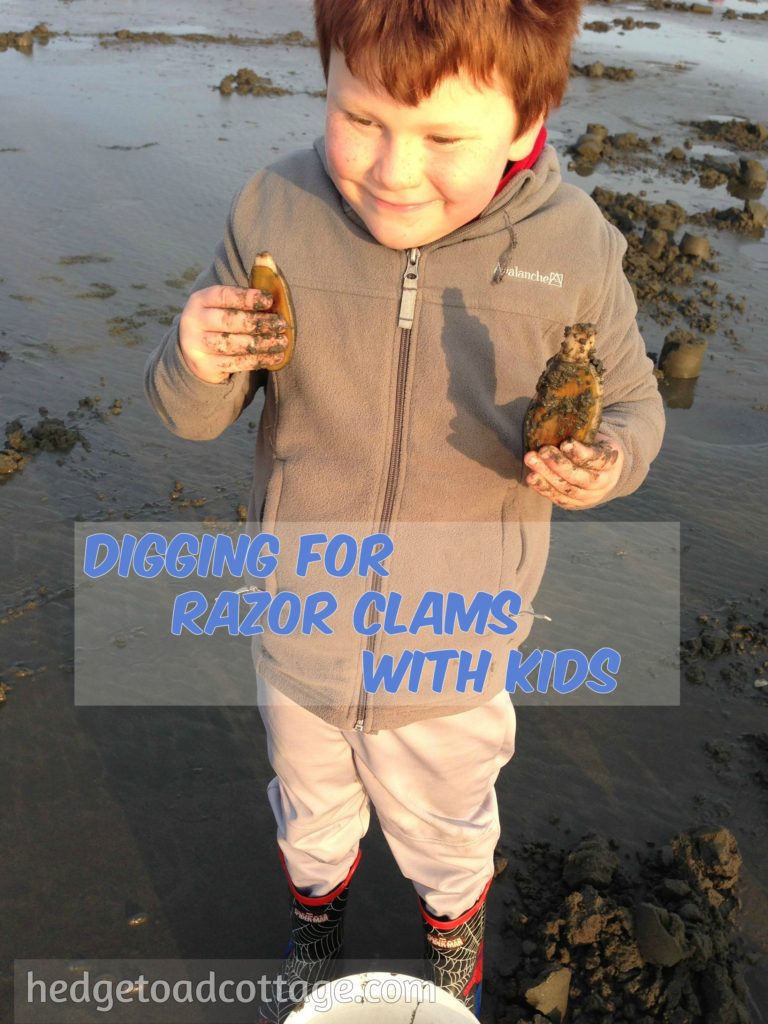
Before You Hit The Beach: Get Your License
Before you start digging, there’s one important thing to remember: a shellfishing license. Anyone over the age of 15 must have one, while kids under 15 can dig up to 15 clams without a license—but they must be accompanied by an adult who has one. Make sure to specify that you want a “shellfish” license when you’re getting yours. Be aware: officials from the Washington Department of Fish and Wildlife (WDFW) do patrol the beaches to ensure compliance, so don’t skip this step!
You can purchase your license online or stop by an authorized dealer. Any store that sells fishing gear likely carries shellfishing licenses as well.
Tools of the Trade: Clam Guns vs. Shovels
When it comes to tools, there are two primary options for digging: the traditional clam shovel and the much-loved clam gun. The clam shovel requires quick, agile digging in the sand, and I like to joke that the people who use them often end up “wet and sandy.” But for those with small children in tow, a clam gun is a game changer.
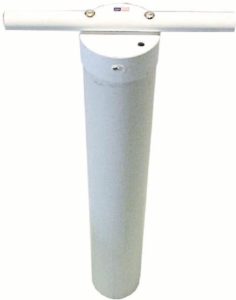

There are specialized shovels traditionally used for clamming. I like to call the people who use them ‘wet’ and ‘sandy’. They require some fast digging in the sand.
A ‘Clam Gun‘ is a large tube with a handle that makes ‘“digging much easier, especially if you’re trying to keep and eye on your little ones while digging. Pair it with a couple of old buckets and you’re nearly set for the beach!
Timing is Everything: When to Dig
Clams are best dug during low tide, which occurs either in the morning or evening. As a parent, I strongly recommend clamming during the day. At night, without streetlights or any ambient light, the beach can get incredibly dark, making it difficult to manage gear, traffic, and, of course, small children. Trust me, a night-time clam dig is not nearly as fun as it sounds. If you think it may get dark while digging, grab a few glow-in-the-dark tubes from Dollar Tree and tie to children’s coats. Easy to see equals safety.
Pro Tip: The weather can be unpredictable, so it’s important to be prepared for anything. Bring extra clothing, socks, rain jackets, warm layers, and, yes, extra underwear. Digging is wet, sandy, and chilly, so it’s better to have more than you need. Also, packing blankets to wrap the kids in on the ride home will be a lifesaver if they get cold. If you don’t need them, consider it a win!
Your First Clamming Tide: Finding the Clams
Once you’re on the beach, it’s time to look for “shows”. These are basically dimples in the sand where claims have burrowed. The closer to the water you, the more likely you are to find live claims. Higher on the beach, you may spot dimples, but these often belong to sand shrimp – don’t bother digging them up. They’re not edible and aren’t worth the effort.
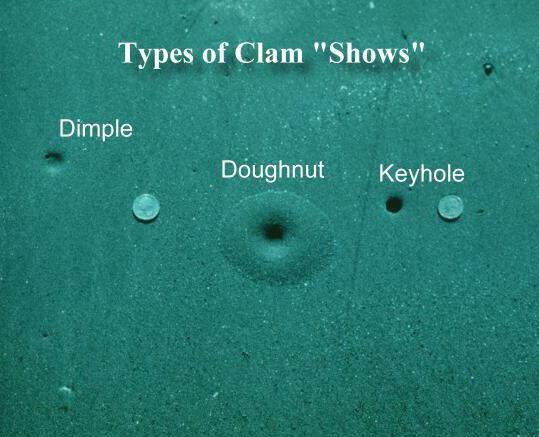
The Washington State Department of Fish and Wildlife has a great page describing how to dig for clams using a clam shovel or clam gun. Be sure to check out their website for more tips.
Using a Clam Gun
To use a clam gun, place the open end of the tube over the “show,” or dimple, and push down on the handle while covering the small holes next to the handle with your fingers. This creates a vacuum effect that pulls the sand and clam into the tube. Once the tube is full, release your fingers, and shake the sand out. You should find the clam inside the tube of sand.
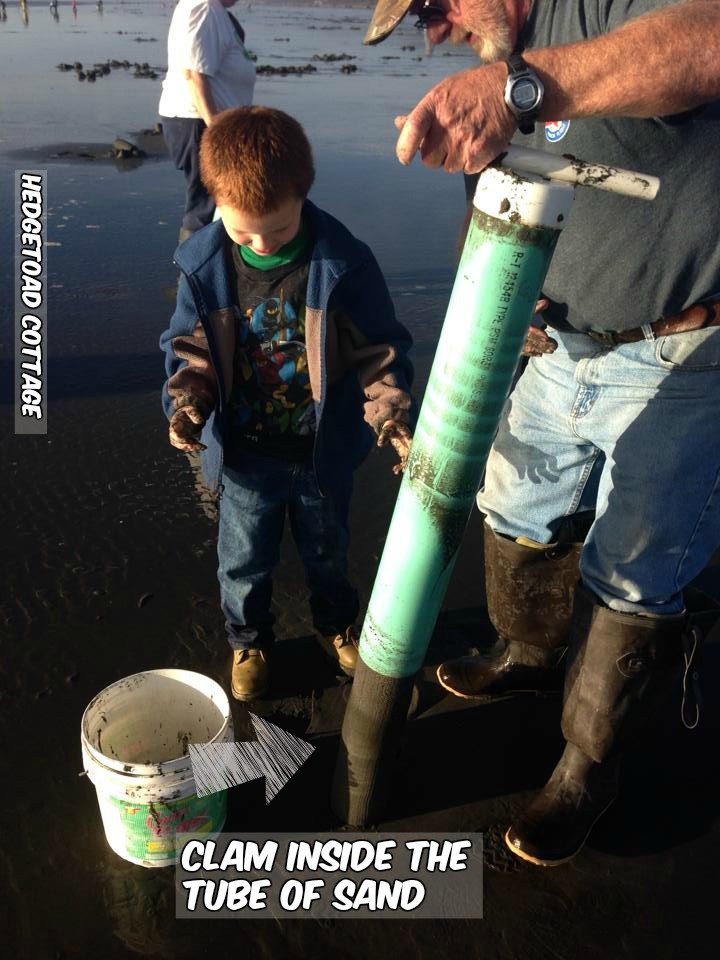
As for the kids, they can help with the search! With some assistance, they can look through the sand you pull up and help place the clams into the bucket. If your child is too young to do this, they aren’t yet ready to count as an official clam digger and you cannot harvest anything in their name. However, kids can still take part in the fun, and they’re allowed to dig up to a “limit” (currently 15 clams). Remember, any clam dug up, must be taken, even if it’s small or damaged. Leaving damaged or small clams on the beach may result in serious fines from Fish and Wildlife officials!
You don’t need specialized tools to dig for clams, but they certainly make the experience more enjoyable, especially with kids. For thousands of years, people have clammed using basic tools, so don’t feel pressured to buy everything on the market. And don’t be afraid to ask other clam diggers for advice—most are more than happy to share tips and even tell some funny stories!
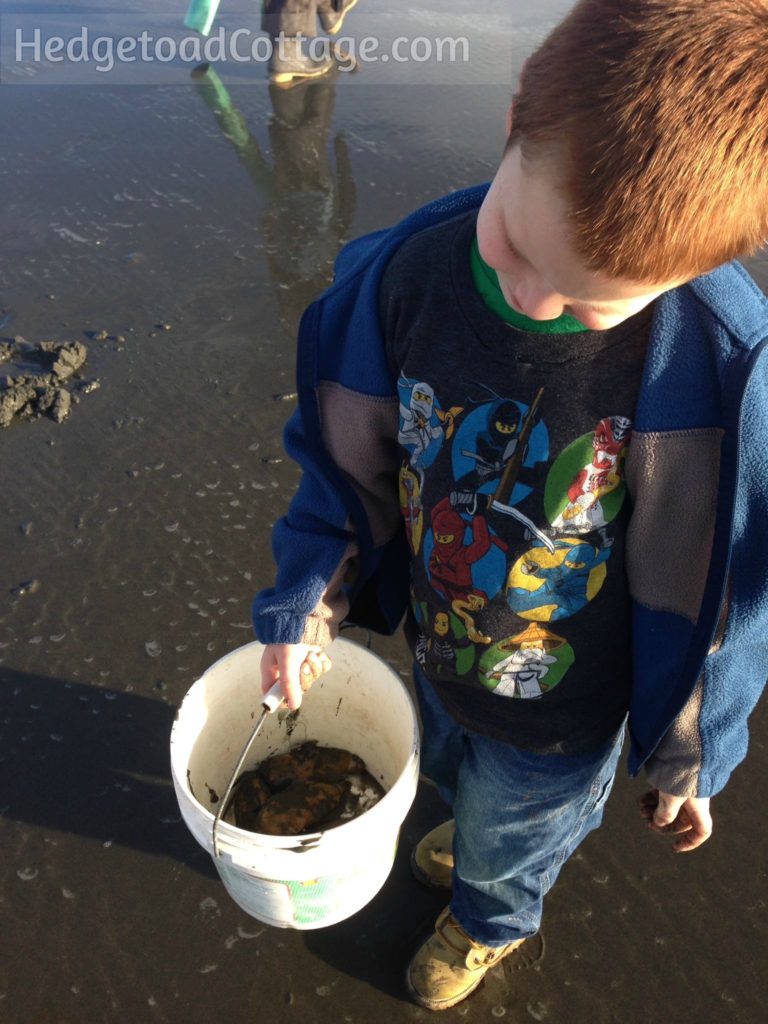
Don’t be afraid to ask other ‘clammers’ for help or advice. Most are happy to share their knowledge with you, along with some really funny stories.
A Word of Caution: Rogue Waves
Safety is paramount when clamming. Never turn your back on the ocean while digging. Rogue waves, larger and more powerful than typical waves, can strike unexpectedly. The rip current on the Washington coast is strong, and the water is incredibly cold. If a child is caught in a rogue wave, the cold can incapacitate them quickly, and the current can pull them away faster than you can react. Always keep a close eye on the water, and be prepared for anything.
Cleaning Your Clams: The Final Step
Once you’ve collected your clams, cleaning is essential. Start by placing them into a bucket with clean water. Prepare everything else for cleaning the clams, while waiting for grit and sand to be expelled by the clam. Step by step instructions are on the WDFW website or ask a neighbor for help. It’s simple process and most people are happy to show you the ropes. If you happen to be camping nearby, don’t hesitate to ask your neighbors for help! It’s a great way to meet new people ans share the clamming experience!
Once the clams are cleaned, they’re ready for the fryer or soup pot! Yum!
Fried Clams
Freshly cleaned clams; washed and dried
1c. all-purpose flour
2 eggs
1 c. panko
1/2 c. vegetable oil
Garlic powder, black pepper, paprika and salt to taste
Heat oil in frying pan. Place flour on the plate, and whisk eggs together and place in the bowl. Mix spices and panko together and place in on the plate. Dip each clam into flour and shake off excess. Dip into eggs and then into panko and spice mixture, making sure to coat each side.
Place coated clam into frying pan and fry until golden brown. Remove from pan and place on paper towel to drain. Serve with lemon wedges and tartar sauce.
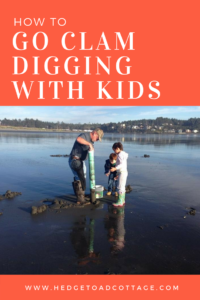


I feel really spoiled with this post! I’ve learned so much about Clam digging, never knew about the clam gun and got a great recipe! Thank you for posting!
I’d never heard of a clam gun! Interesting read, thanks for sharing!
Thanks for the tips! I especially enjoyed the picture of the different clam shows. I remember the first time I dug for razor clams and how fast they were! We did get a few but we would have gotten more if we’d had your equipment!
Wow, I had no idea that’s how it was done! Really neat!
This is so cool!!
What a fun what a fun looking activity thanks for sharing.
Really interesting read! It sounds like a lot of fun. Curious why you have to take every clam dug up?
It’s state law that you must take every clam. It’s a very big fine if you are caught violating the laws. Digs very regulated to ensure that clams are not over harvested and are healthy. Dropping them on the beach would leave them prey for predators and drastically reduce the population. It’s a delicate balance.
OMGosh This sounds like so much fun! Such a fun activity to do with the kiddos!
This sounds like a fun and educational thing to try! Maybe I will do that someday. 🙂
Not a fan of clams but looks like it could be kind of fun to go clamming.
Oh my goodness – my girls would have a blast doing this! Thanks for the fun article.
I have never been clam picking. I think I would have fun
This is fascinating! I’ve never seen anything about how this is done. We live in the Arizona desert, so no clam-digging for us. But, boy, would my kids LOVE that! Sounds almost worth a trip for clam-digging alone!
You should definitely plan a trip. The off season on the beach still has a lot of really cool activities. We love to go beach combing after the storms. They bring in all sorts of interesting things.
That was such an interesting read! And I will try the recipe! It looks so yummy
Such an awesome post! And really well written! GREAT idea to do with the kids for sure!! I wish I lived up there so I could try it out, haha!
It would be really great fun to dig the cams with kids!
Sam – Thiswaymommy
Thanks for rhis awesome article. I have never even heard of a clam gun before. The recipe looks amazing however, would he interested in trying it out (but my clams would not be freshing caught though).
Clam Chowder is my son’s favorite, so we eat it a lot, even when it’s not clamming season. We use ones we’ve frozen and it’s yummy!
Digging seems like a chilling activity.. Although never done it but try it once after reading your post.
You should definitely try it! It’s great fun and if you have questions, there are always tons of people around to help!
SOOOOO COOL!!!! I will totally have to remember this the next time we go to the beach! SO so so cool!
Sounds so fun!
That looks like so much fun! I don’t think we have anything like that around here. I remember looking for crabs on the beach when I was a kid, it’s so much fun!
There are just so many good tools for clamming now. And yes we would watch out for the the rogue waves so we wont turn our backs on the waves. What a beautiful way to spend time with the kids.
These look like the clams we saw near Pismo Beach in California. 🙂 We never went clamming but it was fun to walk along the beach to see what you can see.
It’s actually Copalis Beach in Washington state; it’s one of my favorites for clamming and camping!